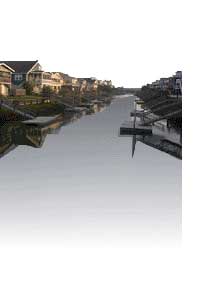SNAPSHOTS OF THE CITIES
Burbank, a northern suburb of Los Angeles, located in the eastern region
of the San Fernando Valley. Burbank is noted for its prominent movie and
television industries. Manufactures include aircraft parts, plastics, and cosmetics. Tourism is important to the city’s
economy. The Burbank-Glendale-Pasadena Airport, Woodbury University, and a campus of the University of La Verne are here. As
of 2004, the city had a population of 105,400.
Burbank is Billed as the "Media
Capital of the World", many media and entertainment companies are headquartered or have significant production facilities
in Burbank, including NBC Universal, The Walt Disney Company, and Warner Bros. Entertainment.
Much of Burbank's economy is based on the entertainment industry. While
Hollywood is considered a symbol of the glamorous entertainment industry, much of
the actual production takes place in Burbank. Many companies have their headquarters or facilities in Burbank, including ABC,
Cartoon Network, NBC, Nickelodeon, The Walt Disney Company, Warner Bros., among others.
Calabasas is another city in the Valley which was formally incorporated in 1991. Many parts of Calabasas
are mountains or hills, which have spectacular views of the San Fernando Valley. Many of the neighborhoods in Calabasas
are gated communities comprised of large houses. The city resides in both the San Fernando Valley and the Conejo Valley.
Glendale lies at the eastern end of the Valley, is bisected by the Verdugo Mountains and is an important
suburb in the Greater L.A. Area. Glendale is a services and residential suburb of Los Angeles. The film animation and technology industries
are important to the economy. Several large companies have offices in Glendale. The U.S. headquarters of the
Swiss foods multinational Nestle and International House of Pancakes are located here.The city is home to a community
college; the restored 1860s Casa Adobe de San Rafael; and the well-known Forest Lawn Memorial Park, where many of the region’s
past celebrities are buried
As of the 2000 census, the city population
was 194,973. Since then, there have been estimates of 201,326 by the U.S. Census Bureau in 2004 and 207,007 by the California State government in 2005, making it the third largest city in Los Angeles County and the seventeenth largest city in the state
of California.
Glendale is
the city with the largest Armenian population in the United States. Census figures indicate that people of Armenian heritage
make up 40% of the city's population, totaling some 85,000 Armenian Americans. Armenian families have lived in the city since
the 1920s, but the surge in immigration escalated in the 1970s and has fundamentally altered Glendale, transforming a former
bastion of white, Anglo-Saxon, Protestant political power into a cultural melting pot. Evidence of Armenian influence pervades
Glendale, and includes many restaurants, several Armenian schools, ethnic/cultural organizations, and on Armenian-language
business and storefront signs. The Armenian community itself has evolved into a diverse group, with some in wealthy neighborhoods
in the hills and poorer immigrants struggling in south Glendale.
Hidden Hills is a gated development nestled
between the western foothills of the San Fernando Valley in Los Angeles County and the Ventura County line, California.
On its website, it boasts that its 2,000 residents “enjoy a city that has preserved a country way
of life that has nearly vanished from the surrounding communities of Southern California.” It also prides itself of
“an authentic bucolic atmosphere” as witnessed by the absence of sidewalks and street lights, the white three
rail fences, and bridle trails. It’s beautiful and peaceful ambiance make it a treasured rural component of Los Angeles
County and one example of small town Southern California living at its finest.
San Fernando the city, is completely surrounded by the city of Los Angeles.
As with much of the San Fernando Valley east of the San Diego Freeway, the city of San Fernando has seen a significant demographic shift in recent years; declining birth-rates,
an aging population of middle-class whites, who once dominated the area in the 1950s, has contributed to the movement into
other parts of the San Fernando Valley. There has also been movement into the Santa Clarita and Antelope Valleys to the north. The area's population continues to remain diverse however, with Latinos now the major racial group in the city.
